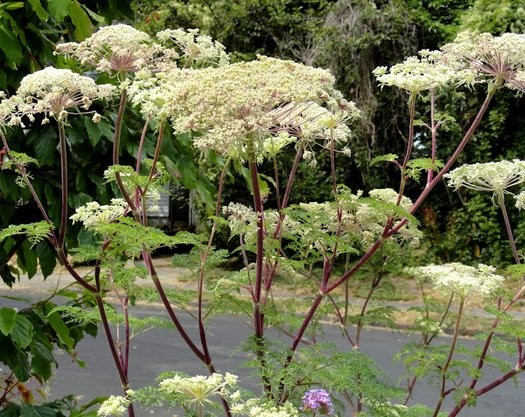Wallich milk parsley
(Ligusticopsis wallichiana)

Description
The flowering plant species formerly known as (i.a.) Selinum tenuifolium Franch. (and still known in cultivation as Selinum wallichianum) is a member of the family Apiaceae now known correctly as Ligusticopsis wallichiana Ligusticopsis wallichiana can reach a height of 3–6 feet (0.91–1.83 m). It is a long-lived, tuberous-rooted, perennial plant bearing large umbels of thousands of tiny five-petalled white flowers from midsummer to early autumn. The delicate basal leaves are thin (hence one of the former specific names tenuifolium - 'thin-leaved') and finely divided, giving them a fern-like appearance. The plant is grown as a hardy garden ornamental, suitable for informal mixed or shrub borders or woodland gardens, and is effective grown as a specimen plant to display to advantage the tiered effect of its attractive floral umbels. The plant, like many others belonging to the family Apiaceae, is aromatic - particularly the root. The fruits (of the mericarp type) have sedative (see also anxiolytic) and aphrodisiac properties and are also used to treat rheumatism and kidney disease. The roots are used to treat abdominal pain (- many Apiaceous plants possess carminative properties, relieving bloating -) and also as a sedative in the treatment of 'hysteria' and 'madness' - particularly when these conditions occur in women (see also Culture-bound syndrome). The whole plant features in traditional magico-religious beliefs of the Himalayan region, being used to prepare dhoop (incense) for ceremonial use (see also Dhupa). More specifically, the powdered root is used as a fumigant in Tantric rituals intended to cure insanity, nervous breakdown and 'hysteria'. The above uses suggest that preparations of the plant are capable of exerting effects upon the Central nervous system and Genitourinary system and that the plant may be mildly psychoactive, bearing comparison with the related Apiaceous plant Ferula moschata - another umbellifer with a long history of use in India to treat 'hysteria' and as a ritual incense and one which has been observed, on occasion, to elicit narcotic effects. Folk-medicinal uses eliciting psycho-sexual effects further invite comparison with another Ferula species, namely Ferula hermonis, considered, like Ligusticopsis wallichiana, to possess aphrodisiac properties.
Taxonomic tree:







